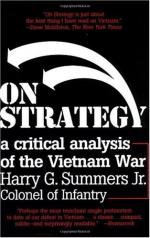|
This section contains 4,293 words (approx. 15 pages at 300 words per page) |

|
SOURCE: "Alex Before and After: A New Approach to Burgess' A Clockwork Orange," in Modern Fiction Studies, Vol. 27, No. 3, Autumn, 1981, pp. 479-87.
In the following essay, Ray argues that the structure of A Clockwork Orange reflects the theme of inevitable human growth.
Most interpreters of Anthony Burgess' A Clockwork Orange have tended to follow the lead of such early commentators as Bernard Bergonzi, A. A. DeVitis, Carol M. Dix, and Robert K. Morris in defining the theme of the novel as the conflict between the natural and untainted Individual and the artificial and corrupt State. Bergonzi's observation that "in its emphasis on the nature of human freedom in a totalitarian society the book has philosophical as well as literary importance" is typical of the thinking that shaped the framework in which subsequent critical discussion has taken place. And this tendency has recently achieved a fitting culmination in the...
|
This section contains 4,293 words (approx. 15 pages at 300 words per page) |

|


